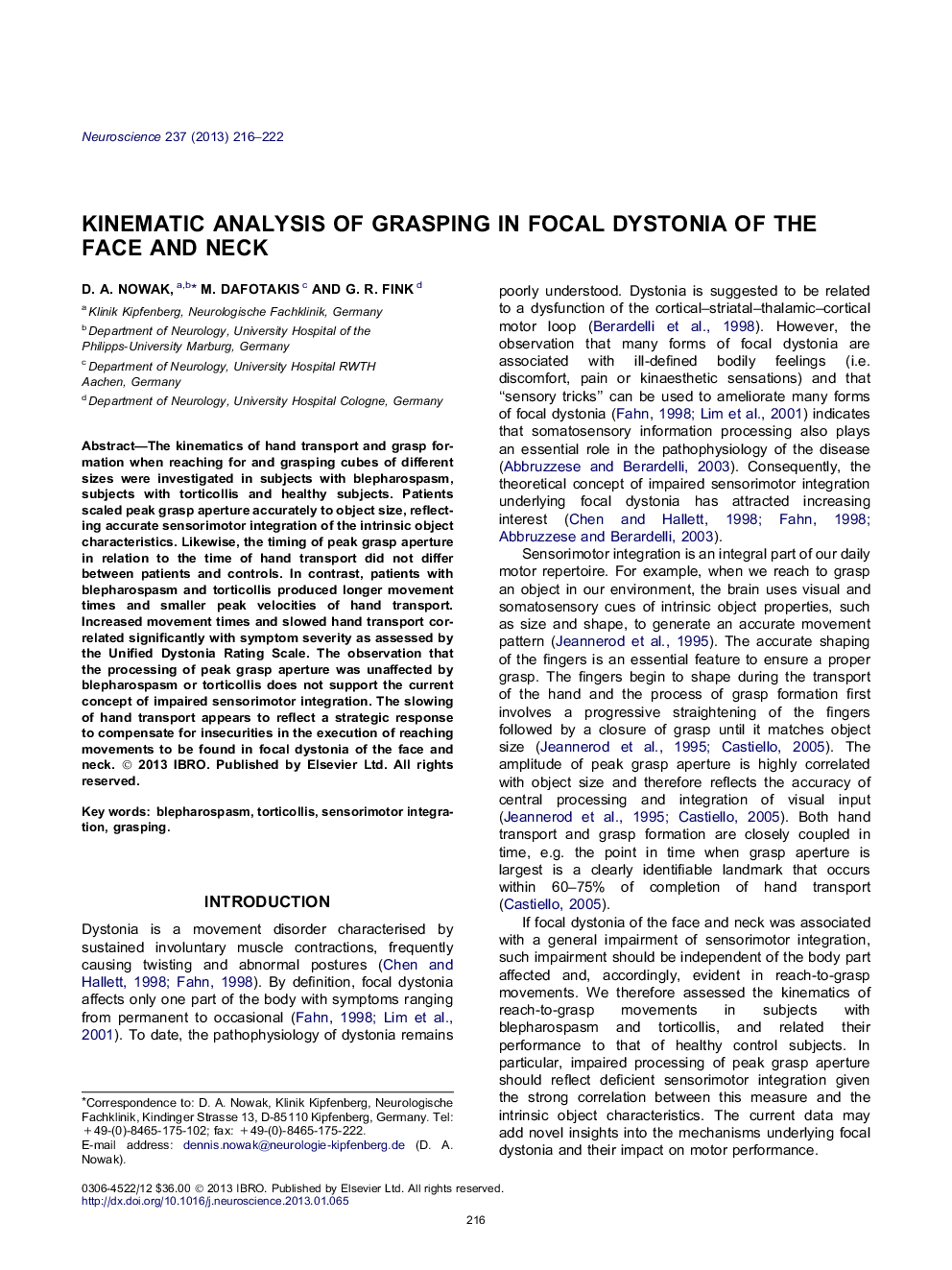| Article ID | Journal | Published Year | Pages | File Type |
|---|---|---|---|---|
| 6275206 | Neuroscience | 2013 | 7 Pages |
The kinematics of hand transport and grasp formation when reaching for and grasping cubes of different sizes were investigated in subjects with blepharospasm, subjects with torticollis and healthy subjects. Patients scaled peak grasp aperture accurately to object size, reflecting accurate sensorimotor integration of the intrinsic object characteristics. Likewise, the timing of peak grasp aperture in relation to the time of hand transport did not differ between patients and controls. In contrast, patients with blepharospasm and torticollis produced longer movement times and smaller peak velocities of hand transport. Increased movement times and slowed hand transport correlated significantly with symptom severity as assessed by the Unified Dystonia Rating Scale. The observation that the processing of peak grasp aperture was unaffected by blepharospasm or torticollis does not support the current concept of impaired sensorimotor integration. The slowing of hand transport appears to reflect a strategic response to compensate for insecurities in the execution of reaching movements to be found in focal dystonia of the face and neck.
⺠Scaling and timing of peak grasp aperture is intact in blepharospasm and torticollis. ⺠Hand transport is slowed in blepharospasm and torticollis. ⺠Slowing of hand transport correlates with symptom severity.
